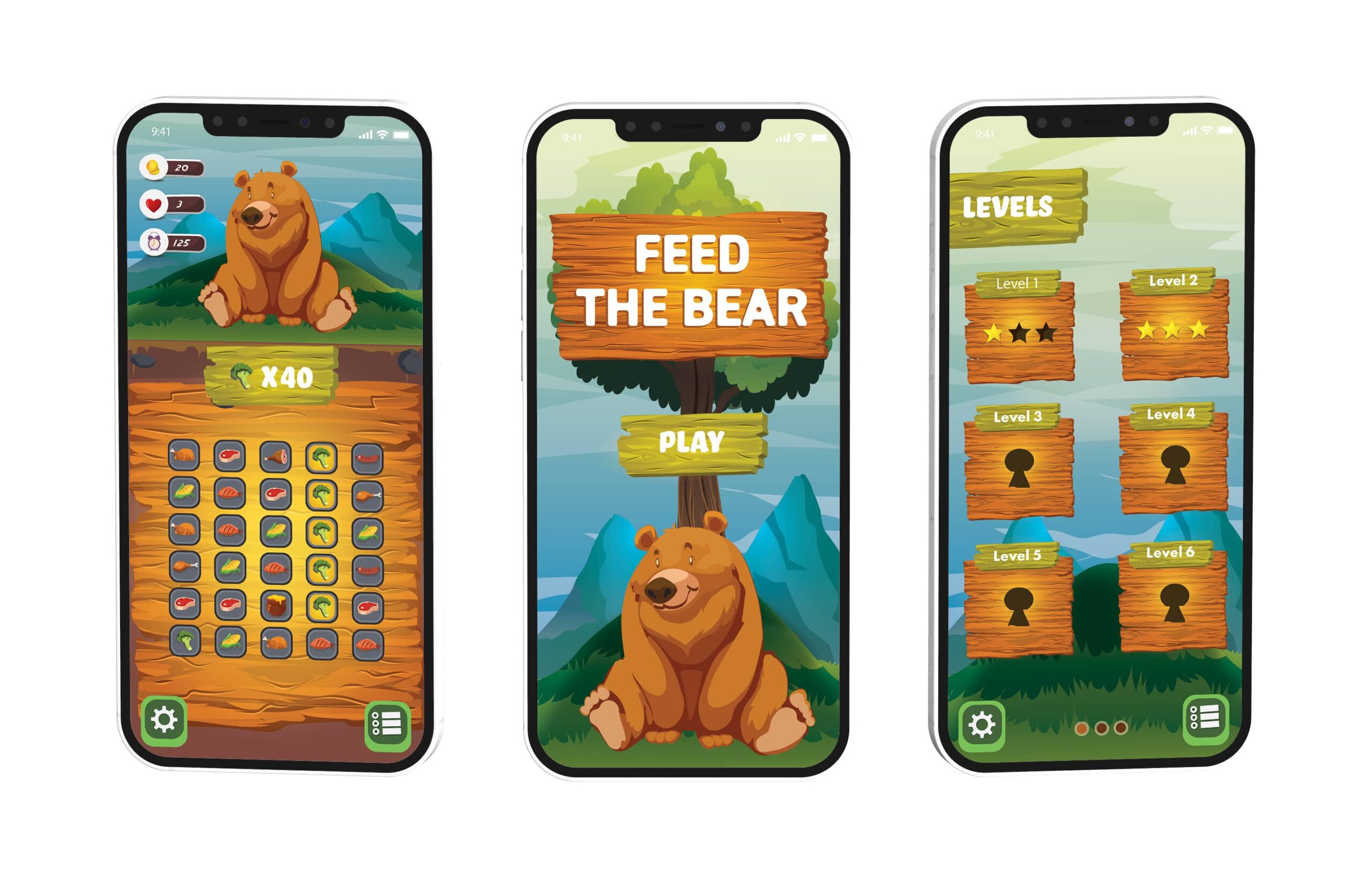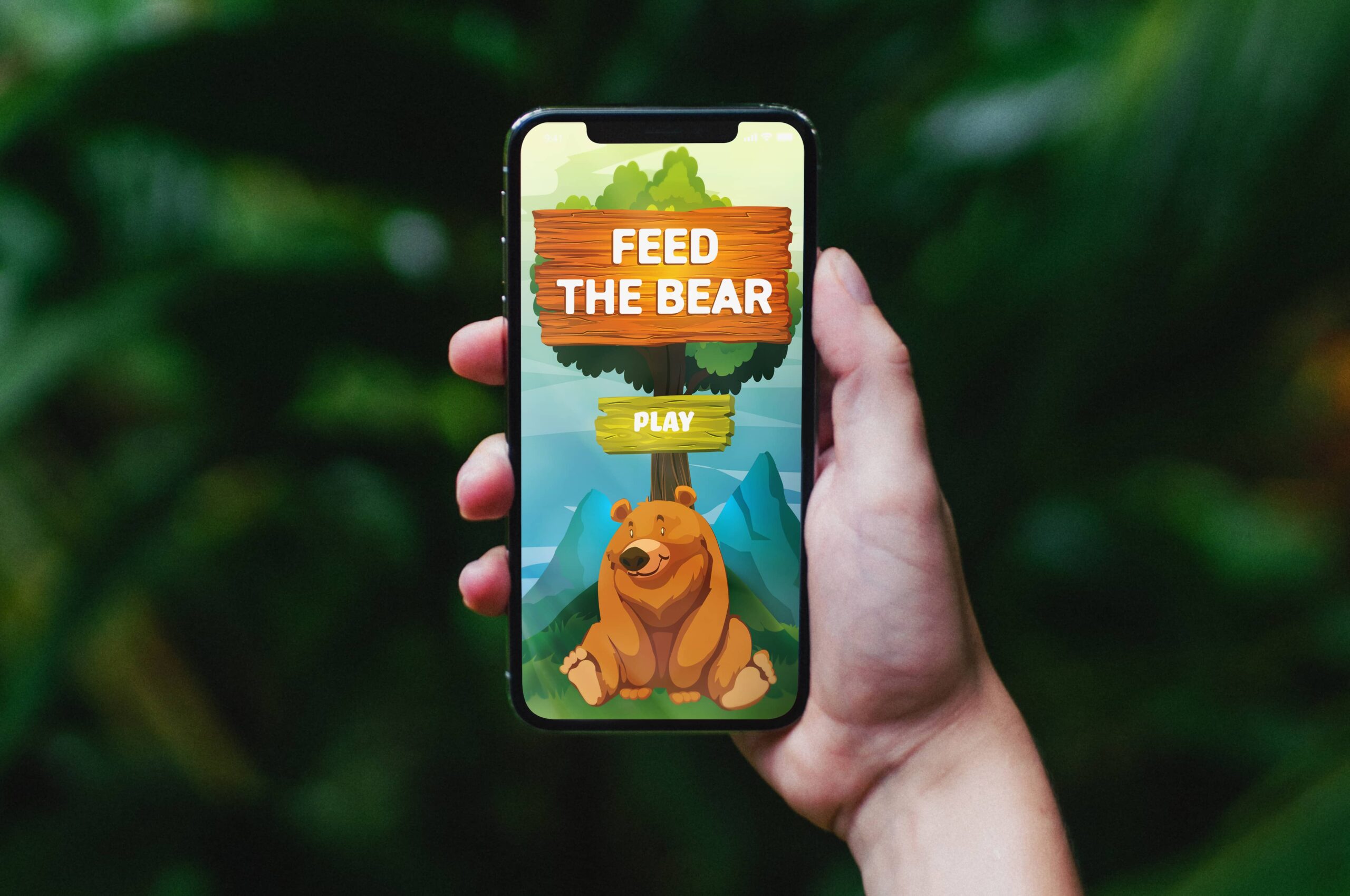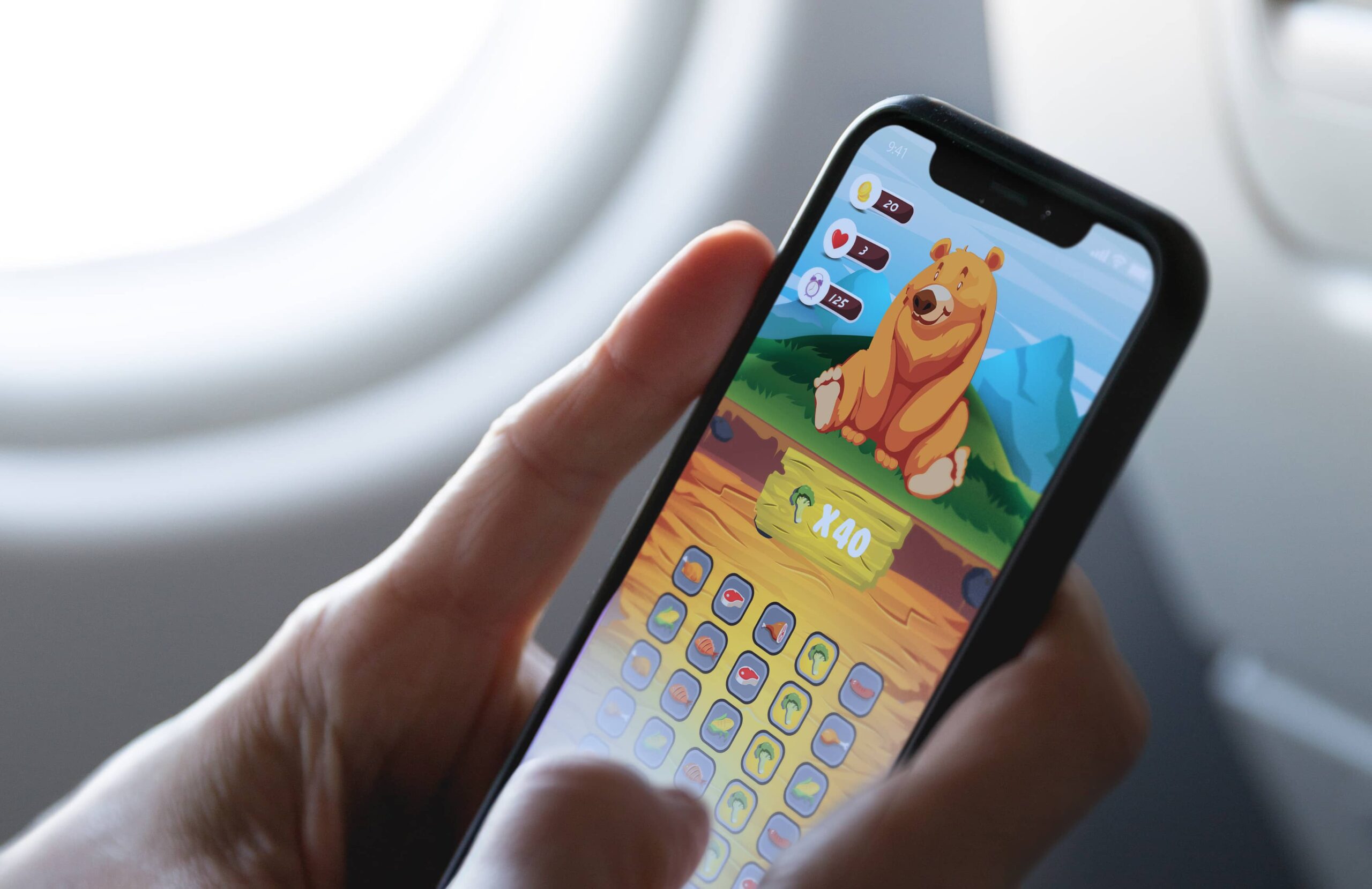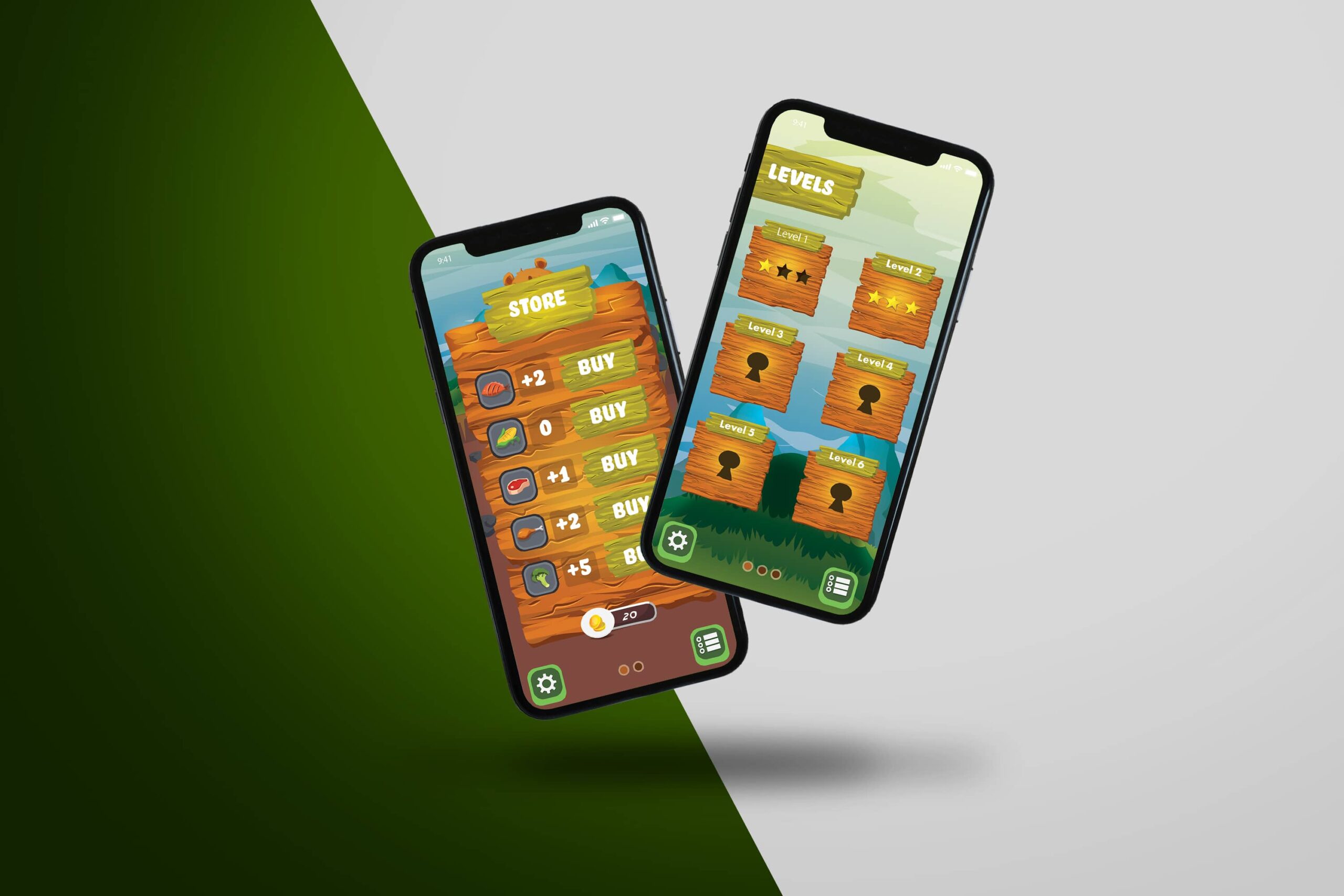Feed the bear
Feed the Bear is a charming puzzle game where you help a bear gather enough food before hibernation. Match food icons to solve puzzles and prepare the bear for winter. Quick thinking and strategy are key as you race against time to ensure the bear is well-fed! Perfect for kids and puzzle enthusiasts alike.
Year: 2020
Project Type: Coursework
Produced: Independently
Feed the bear
Feed the Bear is a charming puzzle game where you help a bear gather enough food before hibernation. Match food icons to solve puzzles and prepare the bear for winter. Quick thinking and strategy are key as you race against time to ensure the bear is well-fed! Perfect for kids and puzzle enthusiasts alike.
Year: 2020
Project Type: Coursework
Produced: Independently



Create a game concept centered around bears, designing the primary icons and interface to visually represent the game’s theme.
Food Preferences: Bears enjoy a variety of foods, including fish, honey, and vegetables, which can be integrated into the game’s concept. These food types can serve as key elements in the gameplay, where players “feed the bear” different items as they progress.
Target Audience: The primary audience for the game is young children who are already familiar with and enjoy vibrant, playful, and colorful games like Mario Kart. The design should focus on creating a fun, engaging experience that resonates with this demographic.
Design Elements: The game’s design should emphasize playfulness, using friendly, vibrant, and colorful visuals. Circular and round shapes could be incorporated to enhance the approachable and fun atmosphere, making the game more appealing to kids.
Game Style: The mood and style of popular games like Mario Kart can be adapted to fit the “Feed the Bear” concept, combining playful elements with dynamic, interactive gameplay to create a memorable experience for young players.
To support my insights, I created a mood board inspired by my research to capture the overall visual style and tone. You can view the mood board here.
To define the problem, I created Point-of-View (POV) Statements for goal-oriented ideation and How-Might-We (HMW) Questions to guide brainstorming sessions. These were developed based on insights and needs identified in my preliminary research.
The “Feed the Bear” game design creates a playful, vibrant atmosphere perfect for engaging young audiences. A warm, wood-textured aesthetic, combined with bright, cartoon-style illustrations, evokes a cozy, natural environment. The intuitive layout features clear buttons and easy navigation, ensuring a seamless user experience.
Vibrant colors and earthy tones strike a balance between excitement and comfort. Thoughtfully designed screens, with concise instructions and intuitive icons, guide players through the game. The level selection screen, with star ratings and locked levels, motivates players to progress. Overall, the design offers a fun, energetic, and rewarding experience.



Minute Maid evolves after 75 years, introducing Zero Sugar, Smoothie, and Energy beverages with a refreshed identity and packaging.
Fermentum tempor cubilia risus tellus massa dis consectetur dolor.
Stay connected and get interesting news & coupon